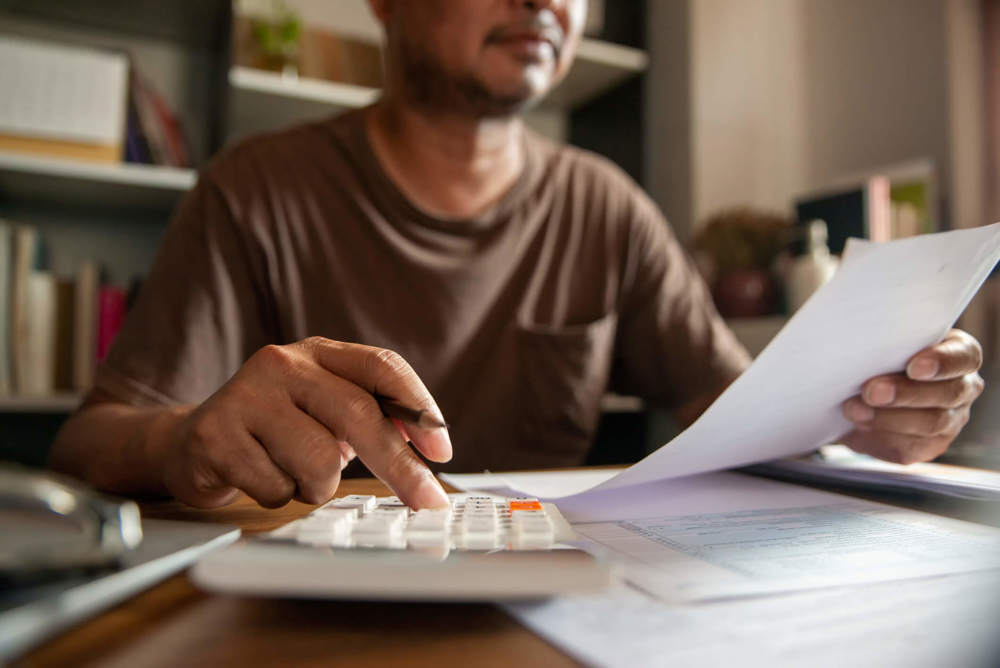Working for yourself can give you the freedom to live life on your own terms. As your own boss, you can enjoy complete ownership of your work. However, having no boss also means saying goodbye to employer contributions that can help you top up your pension.
Don’t worry! There are still many ways you can plan ahead for retirement if you work for yourself. In this guide, we’ll walk you through your options and offer helpful advice on how to save into your self-employed pension.
Pension schemes for self-employed people
You may not be a member of a workplace pension, but you do have options when it comes to building a pension pot. Personal pensions are a good way for self-employed people to save for retirement. They put the choice in your hands, letting you choose your pension provider and where to invest your funds.
You may have heard them called ‘money purchase’ or ‘personal pension’ schemes. Whatever you call them, they're all defined contribution (DC) schemes because you define how much you put into your retirement pot.
Personal pensions fall into three types:
- Self-invested personal pensions (SIPPs): Often called DIY pensions, these are pensions that you manage yourself and come with a wide range of funds to choose from.
- Standard personal pensions: There’s a type of personal pension called a ‘personal pension’. They’re basic pensions that cater to different investors, with a range of investments to suit their risk.
- Stakeholder pensions: Ideal for people that are starting their pension pot, this pension type lets you stop and start payments as well as make small contributions. Its flexibility makes it a good option for the self-employed.
A financial adviser can help if you're unsure about your options and would like personalised recommendations. They can also help you compare plans and investment options.

How much can you put into your pension?
There’s no limit to how much you can save into your pension so it’s better to save more into your self-employed pension if you can do so without affecting your quality of life. The government also helps you top up your pension pot by offering tax relief on your contributions.
To get the most out of tax relief, you’ll need to keep two things in mind: annual allowance and lifetime allowance. The annual allowance is the most you can save into your self-employed pension before you have to pay tax. Currently, it's £40,000 for most people. If you exceed this, you’ll need to pay income tax at the highest rate you pay. And if you go over the current lifetime allowance of £1,073,100 there may be extra tax to pay.
Since you’ll have a DC pension as a self-employed person, you’ll need to count all the contributions made during the tax year towards your allowance. If you’ve met the annual limit you may be able to carry forward unused allowance from up to three prior tax years.
While it’s rare for people to exceed the annual and lifetime allowance, it’s worth keeping track of your contributions if you’re a high-earner - especially if you have more than one pension.
Tax relief
The amount of relief you receive on your pension contributions depends on your income tax band. Lower earners will usually get their tax relief automatically. But if you’re a higher earner, you might need to fill out a tax return to reclaim your tax relief.
- Basic rate: you’ll get 20% tax relief
- Higher rate: you may be able to claim 40% tax relief
- Additional rate: you may be able to claim 45% tax relief
Tax relief on your pension also works differently if you’re a tax resident of Scotland:
- Starter rate: you pay 19% income tax and gain 20% pension tax relief
- Basic rate: you pay 20% income tax and gain 20% pension tax relief
- Intermediate rate: you pay 21% income tax and may claim 21% pension tax relief
- Higher rate: you pay 41% income tax and may claim 41% pension tax relief
- Top rate: you pay 46% income tax and may claim 46% pension tax relief
Pension tax relief is complex so if you need a little support in understanding how to make the most of your pension pot, seek advice.
Making the most of your self-employed pension pot
As a self-employed person, you can’t rely on employer contributions from a workplace pension. How can you ensure you get the most out of your savings? Timeliness and consistency are key.
When you start saving earlier you give your pension pot more time to grow. It can grow even more if you delay retirement for a few years. While it may be tempting to take a tax-free lump sum when you reach age 55, doing so could deplete your pot faster than if you waited.
By saving into your self-employed pension and taking advantage of tax relief, you can build a healthy retirement fund.
The State Pension for self-employed people
Did you know you might be eligible for the State Pension if you’re self-employed? What you’re entitled to is based on your National Insurance contributions if you reach State Pension age on or after 6 April 2016.
State Pension age is the age at which you can start taking the State Pension. This is currently age 66 for both men and women and will increase to 67 between 2026 and 2028.
To date, the full State Pension is £179.60 a week. To get this amount, you’ll need 35 qualifying years in your record. If you’ve worked for someone in the past you may have accrued a few qualifying years. You'll need at least 10 years of National Insurance payments to receive State Pension payments.
You can check your National Insurance record on the government’s State Pension forecast page.
The State Pension can help you afford the necessities of retirement but it won’t cover everything. If you're worried about not having enough in later life, speak to a financial adviser.
How to claim your State Pension
Reaching State Pension age doesn’t mean you’ll get your pension automatically. The government will send you a letter four months before you’re eligible. This letter will outline the three ways you can claim your pension:
- Online: Visit the Department for Work and Pensions website to register with the Government Gateway
- Phone: Call the State Pension claim line on 0800 731 7898
- Post: Download, print and fill out the State Pension claim form and post it to your nearest pension centre.
How financial advice can help
Anything you can save today can help you enjoy a more comfortable retirement tomorrow. So, if you want to ensure you make the most of tax relief and your contributions, get advice from a professional.
A financial adviser could help you:
- Make the most of your pension pot
- Determine the most suitable age to retire
- Compare and choose the right pension scheme for your needs
- Budget for short, medium and long-term goals
- Discover the most tax-efficient ways to save for retirement
Getting advice from an FCA-regulated adviser also protects you in the rare event that your pension provider goes bust.
Connect to an expert
If you’re ready to take control of your future, you’ve come to the right place. We help self-employed people all over the UK find peace of mind by matching them with their ideal pension experts.
Our free service takes the fuss out of searching for an expert, giving you more time to focus on the important stuff. It works in three simple steps:
- Tell us what type of advice you need
- We’ll connect you with an FCA-regulated adviser
- Learn about your pension options with a free consultation
Have 60 seconds to spare? Click the button below to connect to your expert now!




